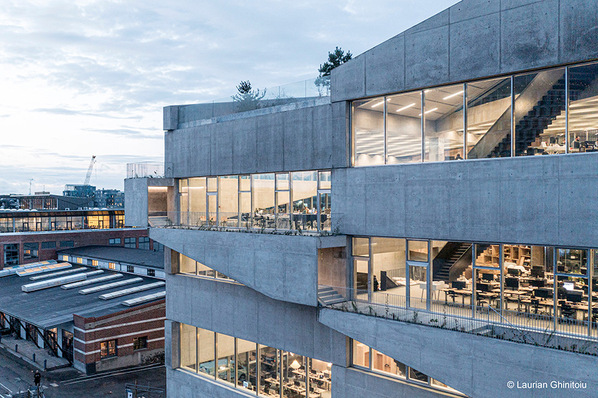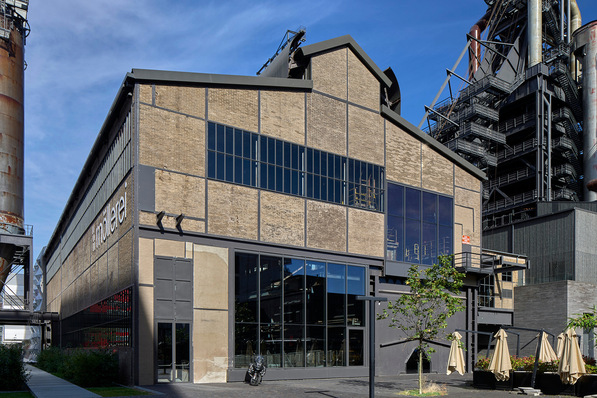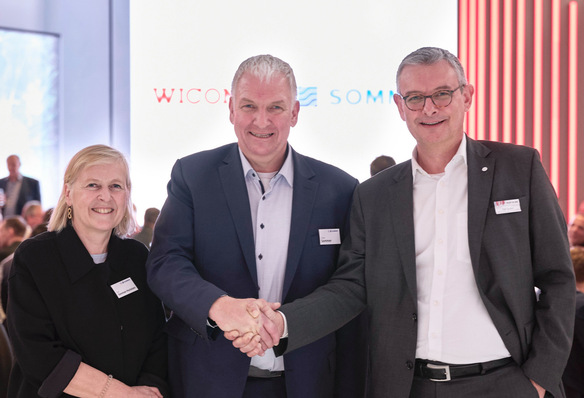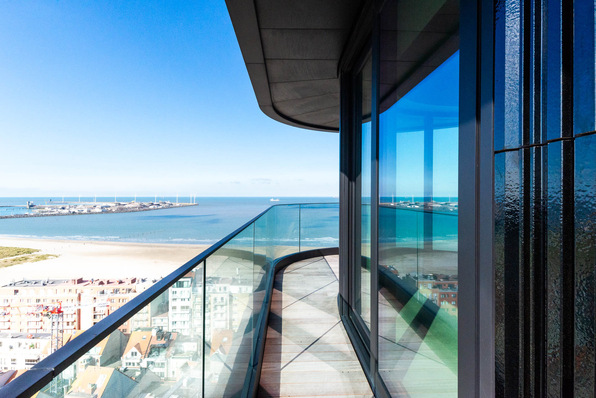The office building "De Walvis" dates to the 1960s and stands in the north of the historic city centre of Amsterdam is named after a former shipyard on the harbour island: "Walvis" is Dutch for "whale”. The building has now been converted into a contemporary property by KAAN Architecten. Today, the renovated office building meets all the requirements of a sustainable building and has been certified BREEAM Excellent for it.

Sebastian van Damme / Schollglas
Why does the facade have 362 glass portholes?
As an allusion to the borough's shipping past, the architects had a circular opening wing incorporated in every second glass element. On each floor, therefore, 362 circular windows (diameter 546 mm) were installed at eye level, which can be easily opened with a circular turning sash.
The window sashes of the portholes were developed by Schollglas especially for this project. They are secured with an edge seal made of silicone and inserted floatingly into the circular surface cut-outs of the fixed glazing.
Which highly selective solar control glass was produced by Schollglas?
For the glass, the planners and facade builders opted for a triple insulating glass from Schollglas with the solar control glass Gewe-therm Sun with SunGuard SNX 60. The glass supplier's consulting team had advised the triple silver-coated solar control glass in order to optimise the amount of daylight entering the interior spaces. At the same time, the glass prevents a high level of heating caused by strong solar radiation.
SNX 60 glass lets in 60 per cent of natural daylight, but only 29 per cent of the sun's heat. The glass is thus one of the products with the highest selectivity (ratio of light transmission to solar factor) on the market. Also important for the comfort of office users is the optimisation of internal colour reflection, which gives the glass an extremely neutral hue, regardless of the viewing angle.

Sebastian van Damme / Schollglas
[First office building to utilise switchable liquid crystal solar control glass]
Finally, for the glass construction, Gewe-therm Sun and SunGuard SNX 60 were combined with clear float glass and LSG ClimaGuard Premium 2. The glass construction helps to reduce energy costs by lowering the need for artificial lighting, air conditioning and heating.
Thanks to the high-performance glass from Schollglas, it was possible to implement a highly transparent facade at "de Walvis", which has a unique maritime look with its eye-catching portholes.













